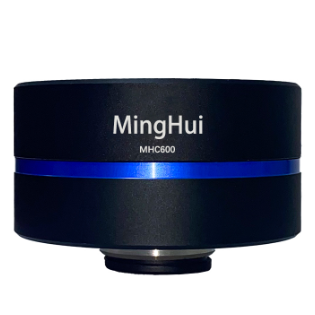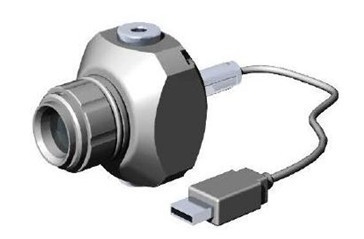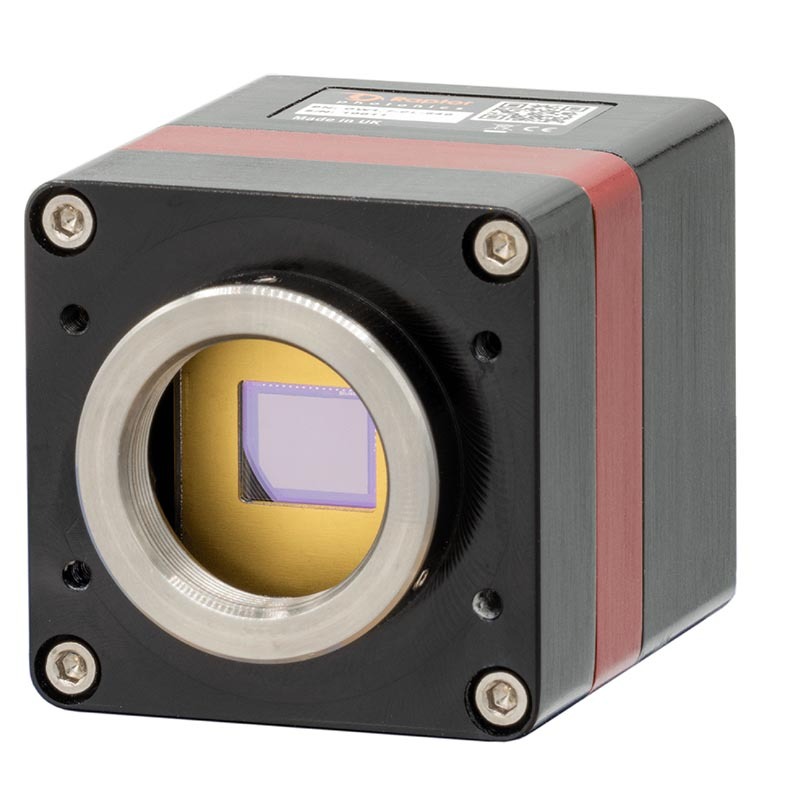
方案详情
文
In this work, we report on the direct measurement of heat release rates via
simultaneous laser-induced fluorescence of OH and CH2O radicals using planar laserinduced
fluorescence (PLIF). The product of the two images is shown to correlate
with the forward production rate of the HCO radical, which in turn has been found to
correlate well with heat release rates in premixed hydrocarbon flames. Heat release
rate measurements were also taken with OH* for comparisons with the results from
the laser-based technique. The measurements were made in a lean turbulent premixed
flame subject to acoustic forcing; this flame mimics the instabilities encountered in
lean premixed pre-vaporized combustors (LPP). As the scheme is based on probing
radical species that participate in the major heat release reactions, it is the closest nonintrusive
measure of heat release rate currently available and thus presents a very
useful diagnostic tool in combustion research.
方案详情

Heat release rate measurement in turbulent flames BO Ayoola', R Balachandran, E Mastorakos, CF Kaminski'Department of Chemical Engineering &‘Department ofEngineering, University ofCambridge, Pembroke Street, Cambridge, CB2 3RA In this work, we report on the direct measurement of heat release rates viasimultaneous laser-induced fluorescence of OH and CH2O radicals using planar laser-induced fluorescence (PLIF). The product of the two images is shown to correlatewith the forward production rate of the HCO radical, which in turn has been found tocorrelate well with heat release rates in premixed hydrocarbon flames. Heat releaserate measurements were also taken with OH* for comparisons with the results fromthe laser-based technique. The measurements were made in a lean turbulent premixedflame subject to acoustic forcing; this flame mimics the instabilities encountered inlean premixed pre-vaporized combustors (LPP). As the scheme is based on probingradical species that participate in the major heat release reactions, it is the closest non-intrusive measure of heat release rate currently available and thus presents a veryuseful diagnostic tool in combustion research. INTRODUCTION The reduction of emissions has been made paramount to the gas turbineindustry since the introduction of government policies on pollution control. As aresult, the LPP concept has been conceived for the reduction of NOx emissions in gasturbine combustors. The main advantage of this concept is the reduction of theoperating temperature by the lean operation of the combustion process. At lowertemperatures, the rate of the main NOx formation mechanism is reduced, as themechanism requires a high activation energy. However, lean premixed flames arehighly susceptible to combustion instabilities during lean operation. The instability isdriven by the coupling of local heat release rates with acoustic eigenmodes within thecombustor [1]. Although a lot of progress is being made in combustion instabilityresearch, the problem is far from being resolved. In ground-based gas turbines, theLPP concept has been successfully applied; however, in aero engines, the LPPconcept has not yet been implemented because of the varying load conditions underwhich such engines are required to operate (e.g. during take-off, landing andoperation at different altitudes). Combustion instabilities could in this case lead toengine failure with catastrophic consequences; hence, the investigation of theinteraction between acoustics and heat release rate in lean pre-mixed flames is vital tothe development of the next generation, ultra-low emission gas turbine combustors. Heat release rates are usually estimated using species chemiluminescencebecause chemiluminescence signals have been reported to correlate with fuel flowrate [2, 3]. However, it has been reported that chemiluminescence signals seem to bevery sensitive in regions of high strain and curvature which dominate the flame frontin highly turbulent flames. Laser based measurement techniques are ideal diagnostictools in this context because they are species specific, fast and non-intrusive on thecombustion system. One of the most powerful techniques is planar laser-inducedfluorescence (PLIF) [4]. This technique is ideal for the determination of speciesconcentrations in the combustion zone. From such measurements, flame propertiessuch as temperature and heat release can be inferred with good precision and ontimescales much smaller than characteristic timescales for the investigated flows.PLIF is especially useful for probing unsteady flames because it provides information in 2 dimensions in contrast to traditional point and spatially averaged measurementtechniques such as chemiluminescence. In order to measure heat release rates, we employ an experimental scheme thatinvolves the simultaneous PLIF of the OH radical and the CH2O radical [5, 6]. It hasbeen shown that the product of these PLIF images generates an image that is wellcorrelated with the instantaneous distribution of heat release rate. With a reliableindicator of heat release rate, flame-acoustic interactions cann be thoroughlyinvestigated to provide vital information for the prediction and control of the unsteadyphenomenon typical of LPP combustors. This work describes the laser-based technique of measuring spatially resolvedheat release rates in a model combustor, which mimics the unsteady phenomenonencountered in LPP combustors by the acoustic excitation of the inlet flow ofpremixed reactants. This paper is divided into four main sections. In the first section,the theoretical aspects of the PLIF measurements are discussed and the heat releaserate measurement technique, using the simultaneous PLIF of OH and CH2O, isdescribed. In the second section, the experimental details of the measurementsincluding the laser facility and the combustor are discussed and in the third section,the heat release rate results obtained are presented. The paper is then concluded in thefourth section. EXPERIMENTAL TECHNIQUE Laser-induced fluorescence (LIF) LIF is the most widely used laser-based diagnostic technique for investigatingcombustion and it is the method employed in this research work. It is capable of highspecies detection sensitivity and concentrations below 100 ppm can be routinelydetected. A great number of chemical intermediates formed in flames are detectableusing LIF and in turbulent combustion applications, measurements can be performedat much faster timescales than the characteristic flow timescales. This technique hasbeen extensively reviewed by Eckbreth [7], Kohse-Hoinghaus [8] and Hanson et al[9]. In LIF, molecules are excited from a ground state to a higher energy level byabsorption of light. A number of these excited molecules relax back to the groundstate by emitting spontaneous fluorescence which is subsequently collected as signal.The principles of LIF can be described using a rate equation approach. Figure 1 belowillustrates a simplified energy level diagram to show the energy transfer processes thatoccur when a molecule is excited through an allowed transition. Figure 1. Schematic energy level diagram for the LIF process. There are five energy transfer mechanisms that can take place when a molecule isexcited (AE21). The molecule can return to level 1 by laser-induced stimulated emission at a rate b21; be photoionized to higher energy levels at a rate W2i; ● predissociate into its constituent atoms at a rate P: be quenched by inelastic collisions with other molecules resulting in energytransfer to other ro-vibrational states at a rate Q return to level 1 by spontaneous emission (fluorescence) of photons at rate A21.The last of these processes constitutes the LIF signal. The rate equations governing the time dependent population Ni, N2 of theground state (level 1) and the excited state (level 2) are given by where N; is the number density in level i, Aij is the spontaneous emission coefficient from i to j, bi is the stimulated emission rate from i to j, P is the predissociation rate, W2i is the photoionization rate. b,=-B where Bij is the EinsCtein coefficient for stimulated absorption, cis the speed of sound and I is the laser spectral irradiance in Wcm ’cm. P and W2; can oftenbe ignored because most excited states are neither predissociative nor will theyphotoionize readily. By assuming that no chemical reaction occurs during themeasurement and steady state is reached during the excitation pulse, an expressioncan be obtained for the fluorescence signal power, F. Integrating equation (1) andsubstituting for Nz and by in equation (2) gives: I where the saturation irradiance I sat is defined as and h is Planck's constant. v is the frequency of the emitted fluorescence, is the fluorescence collection solid angle, V. is the fluorescence collection volume [7]. It is seen from (3) that for I>> I"a, the emitted fluorescence signal isindependent of the laser power used. For Iu>> I”a, the fluorescence is linearlyproportional to the laser irradiance and (3) simplifies to The term A/(4+g) in (5) is defined as the fluorescence quantum efficiency, Pre.In atmospheric pressure flames,A<
确定
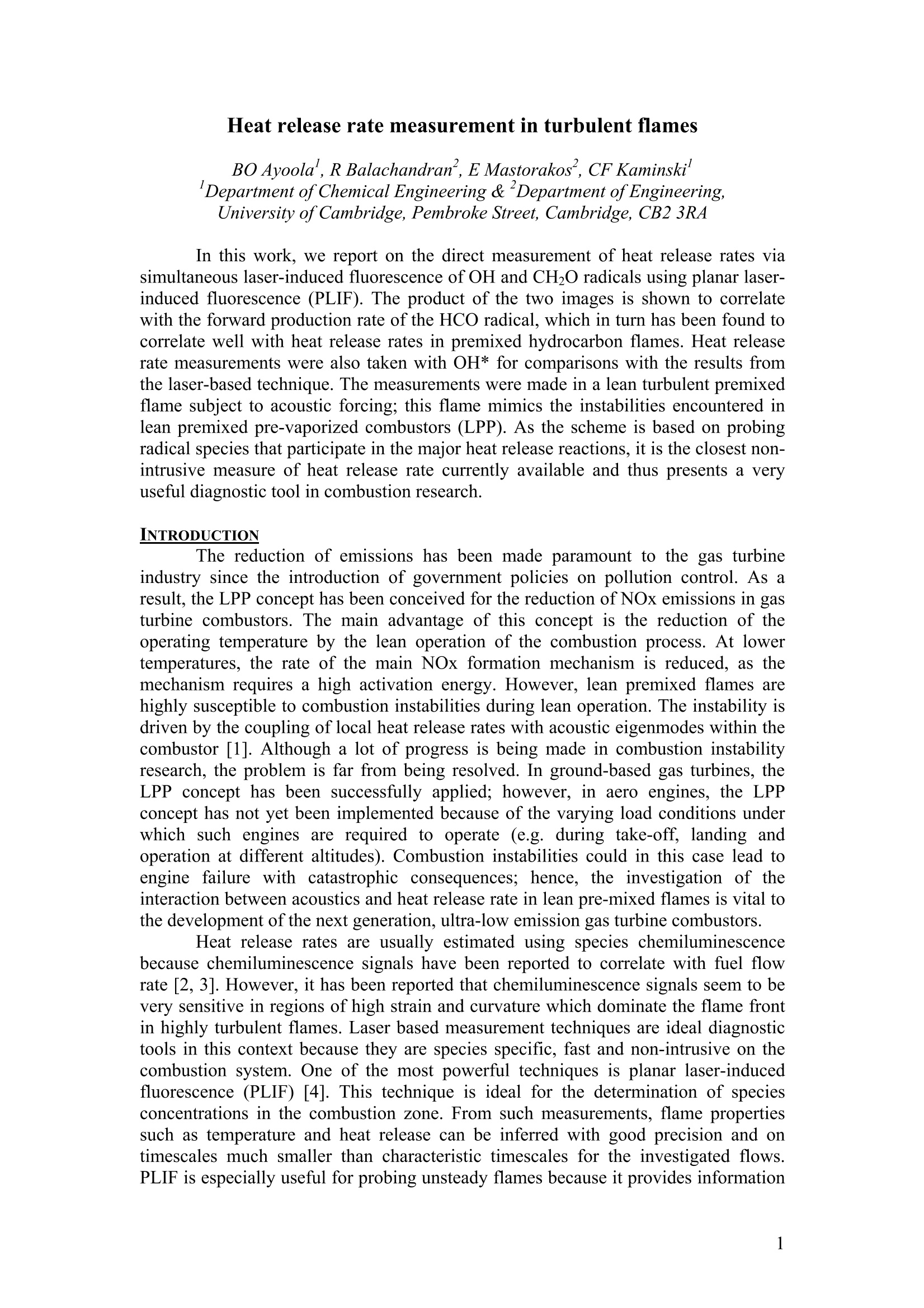

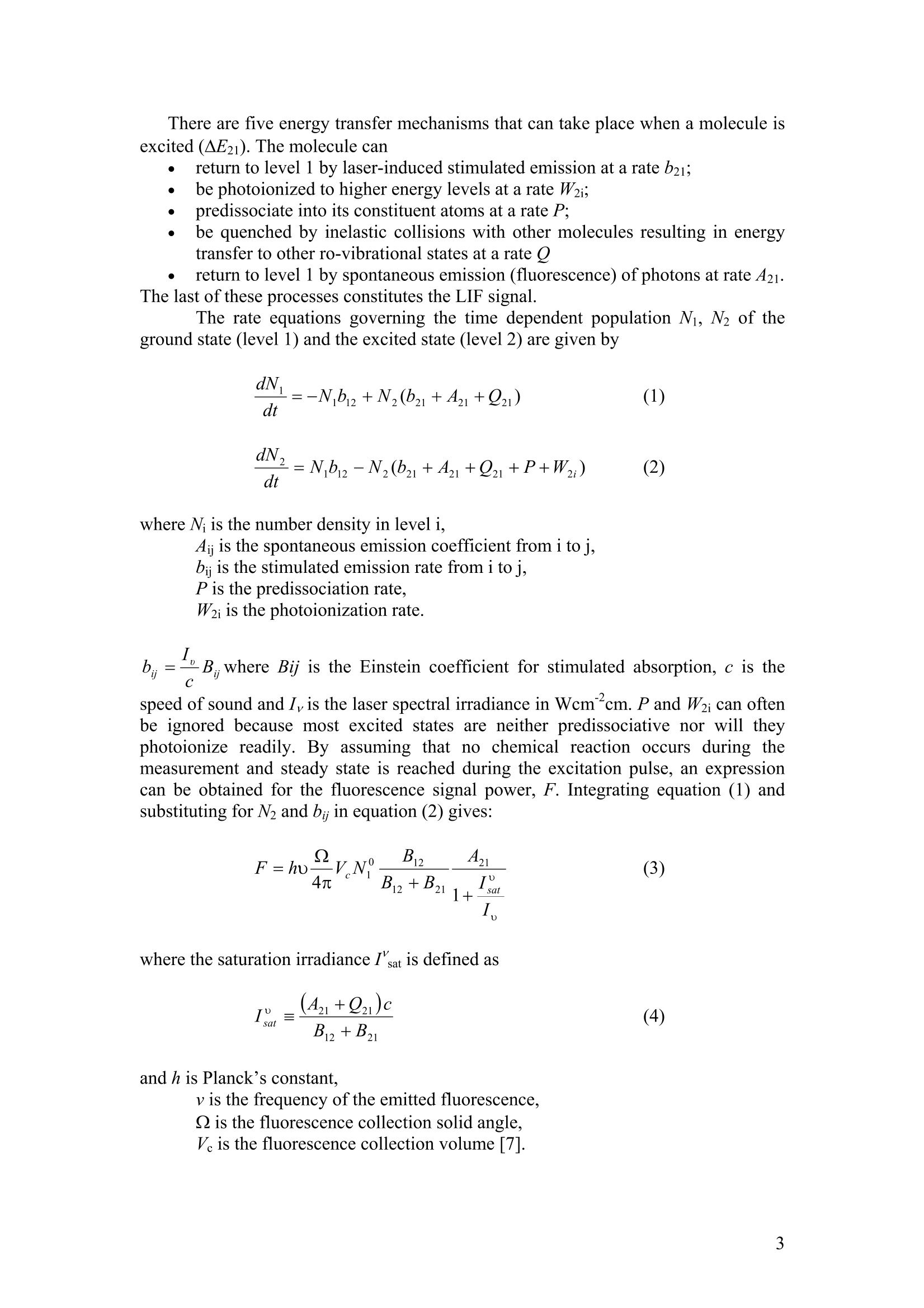

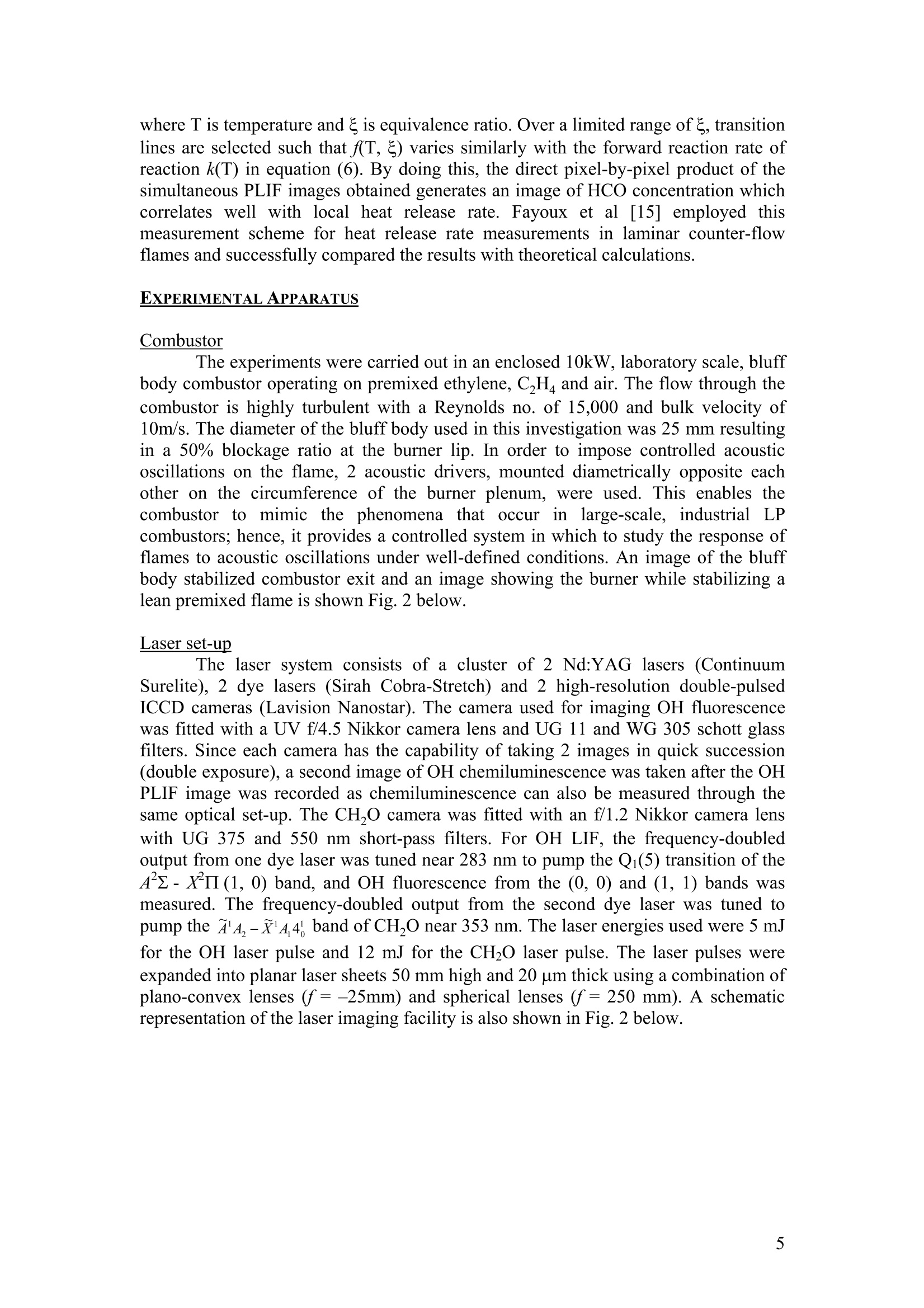


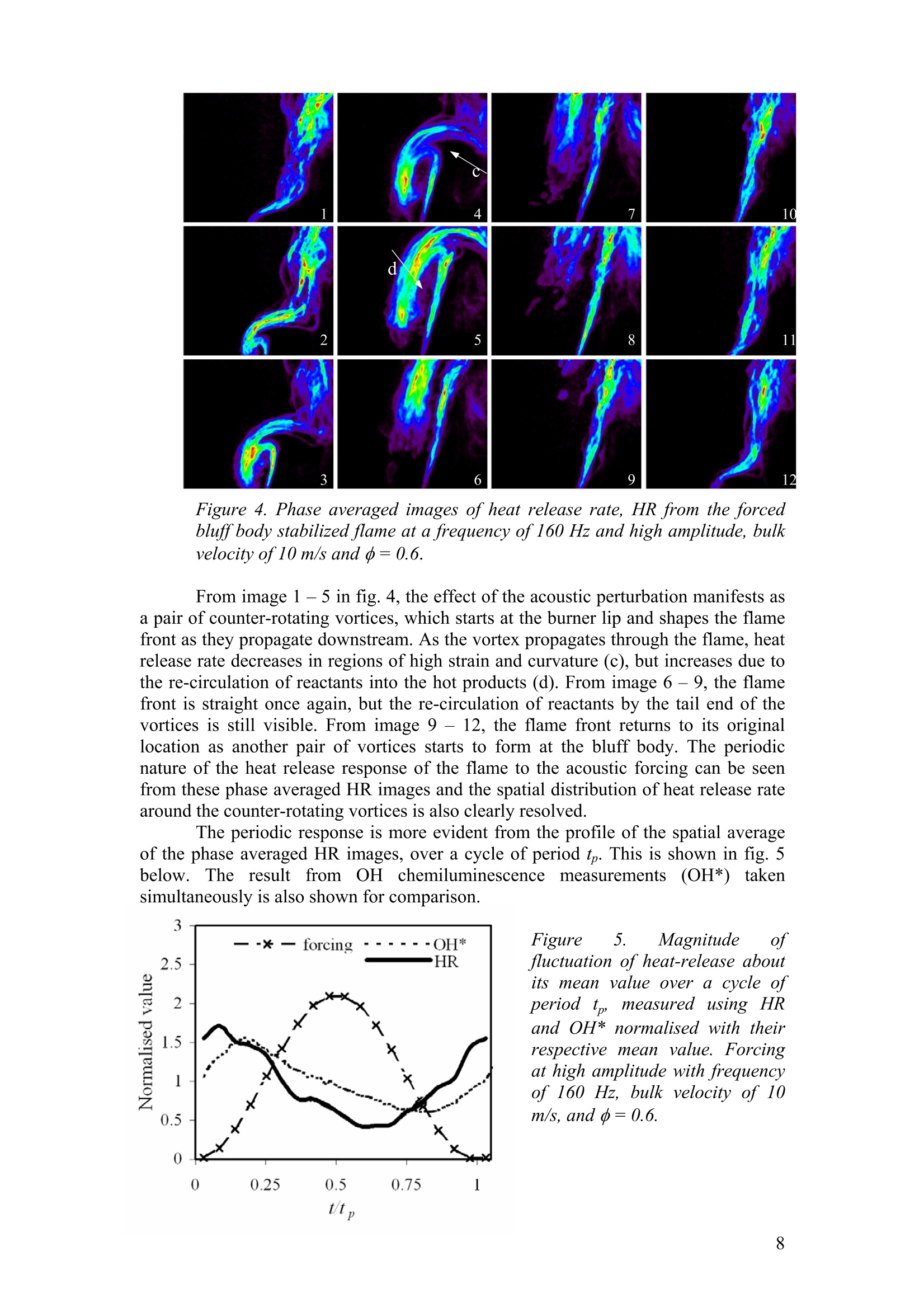


还剩8页未读,是否继续阅读?
北京欧兰科技发展有限公司为您提供《湍流火焰中热释放速率检测方案(流量计)》,该方案主要用于其他中热释放速率检测,参考标准--,《湍流火焰中热释放速率检测方案(流量计)》用到的仪器有PLIF平面激光诱导荧光火焰燃烧检测系统、德国LaVision PIV/PLIF粒子成像测速场仪、Imager LX PIV相机
推荐专场
相关方案
更多
该厂商其他方案
更多





















